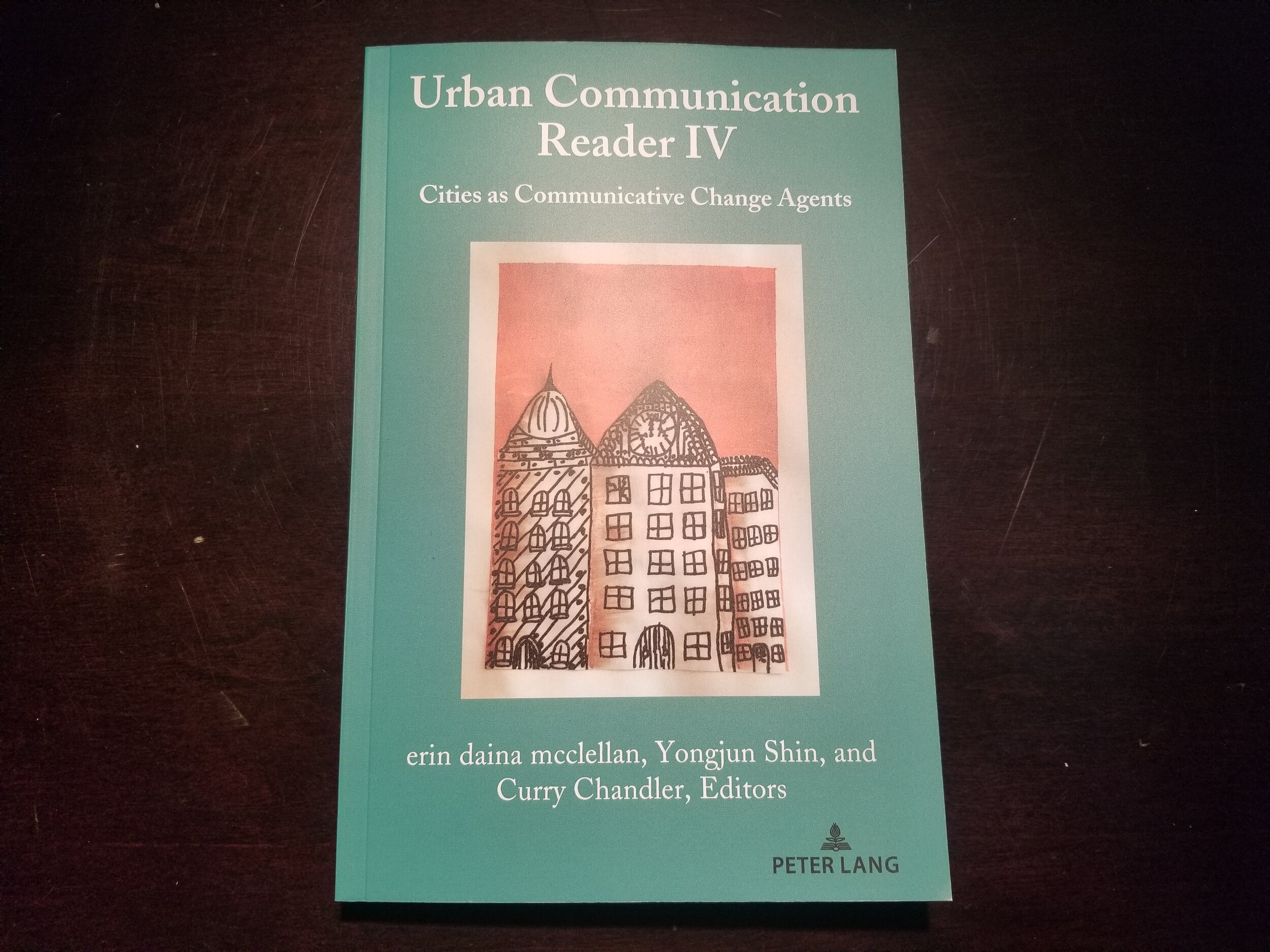New Book: Urban Communication Reader vol. IV
The Urban Communication Reader vol. IV: Cities as Communicative Change Agents is now available. I am grateful to have been part of bringing this project to fruition, along with my co-editors erin mcclellan and Yongjun Shin. As with previous readers in the series, this volume brings together an international array of scholarship that illustrates the wide range of theoretical and methodological perspectives that have been applied to the field of urban communication. I am very thankful for the support that my colleagues and I have received from the Urban Communication Foundation, series editor Gary Gumpert, and the many editorial and publication liaisons at Peter Lang Publishing who guided us through the final stages of this process.
From the official book description:
Today, the world is facing climate change, wealth inequality, housing crises, food shortages, mass migration, and now a global health pandemic. Cities are at the heart of both these problems and their solutions. Urban communication scholars are well-poised to examine the change initiatives that are both caused and inspired by such complex problems. This volume provides a collection of urban communication research focused on how examining change through the lens of communication provides unique processual understandings of cities as dynamic sites formed through the interplay between concrete cases and conceptual ideas. The first section, Change through Institutional Intervention, addresses how diverse societal institutions—including policy, regulation, planning, and voluntary arts—interplay with changes in our urban communities. The second section, Change in Place and through Space, explores various ways in which spaces and places are able to transform through communicative practice, specifically focusing on how space and place provide unique frames for communicating change and influencing interaction in cities. The third section, Change through Participation and Engagement, collectively draws attention to the ways that public participation and engagement are utilized in cities in ways that enhance the communication both within and about them, focusing specifically on how this happens globally in teaching and learning environments, community planning partnerships, industrial site redevelopment projects, and approaches to food sovereignty in urban agricultural initiatives.

